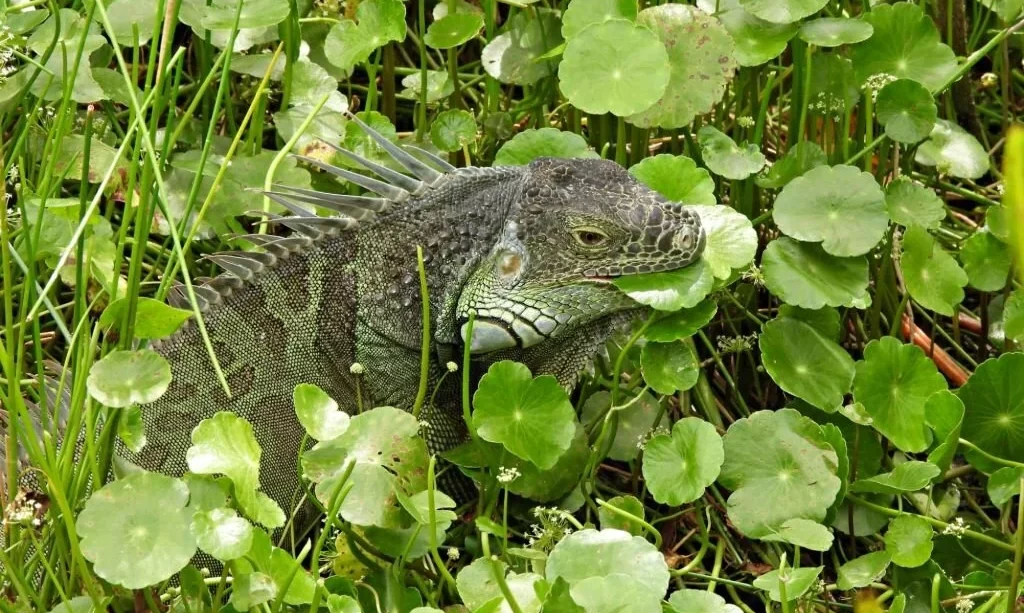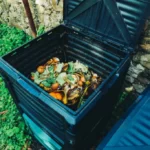Lizards, those remarkable reptilian residents that inhabit diverse ecosystems around the world, have long been a source of fascination and curiosity for nature enthusiasts, researchers, and those who share their living spaces with these scaly creatures. One of the intriguing aspects of lizards is their dietary habits, which can vary significantly from one species to another. While many people associate lizards with being insectivorous, the question that often arises is, “Do lizards eat plants?”
In this article, we embark on a journey to unravel the mysteries surrounding the dietary habits of lizards. As these reptiles inhabit a variety of landscapes, from arid deserts to lush tropical forests, understanding their feeding preferences is not only a matter of scientific interest but also relevant to gardeners, horticulturists, and nature lovers who share their environments with these remarkable creatures.
Lizard Feeding Habits
Lizards, with their diverse range of species, exhibit a fascinating array of feeding behaviors and dietary preferences. The question of whether lizards eat plants or primarily focus on insects and other prey depends largely on their species and ecological niche. Lizard species can generally be categorized into three primary dietary groups: herbivorous, omnivorous, and insectivorous.
While many people are familiar with the image of lizards as voracious insect-eaters, some lizard species have evolved to thrive on a plant-based diet. In this article, we delve into the world of herbivorous lizards and explore how these reptiles have adapted to a green diet, taking advantage of the vegetation that surrounds them.
Herbivorous Lizards: A Green Diet
Herbivorous lizards represent a unique and intriguing group among reptiles. These lizards have embraced a plant-based diet, primarily consuming various forms of vegetation such as leaves, fruits, flowers, and even certain types of algae. Their adaptations for herbivory have equipped them with specialized anatomical features and digestive systems that allow them to extract nutrients from plants efficiently.
One prominent example of herbivorous lizards includes the iguanas, which inhabit tropical and subtropical regions. Iguanas are renowned for their impressive herbivorous diet, primarily feeding on the leaves and fruits of trees and shrubs. Their specialized digestive tracts enable them to break down cellulose, a complex plant material, and extract vital nutrients.
The adaptations of herbivorous lizards extend beyond their digestive systems. Their dentition, often characterized by flattened and serrated teeth, is designed for cutting and shredding plant material. These lizards are also known for their unique social behaviors, which can include basking in groups and foraging for the most nutritious vegetation.
The presence of herbivorous lizards highlights the incredible diversity of reptile species and their ability to thrive in a wide range of environments. While herbivorous lizards are a relatively small subset of the lizard kingdom, their existence showcases the adaptability and evolution of these remarkable creatures. Understanding their dietary habits and ecological roles contributes to a more comprehensive appreciation of the intricate balance of life in various ecosystems.
Omnivorous Lizards: A Balanced Diet
While herbivorous lizards have mastered the art of thriving on a plant-based diet, another group of lizards, the omnivores, have adopted a more balanced approach to their dietary habits. Omnivorous lizards, as the name suggests, have a diverse diet that includes both plant matter and animal prey. This adaptability allows them to take advantage of available food sources and maintain a more varied menu.
Omnivorous lizards are opportunistic feeders, capable of consuming a wide range of items. Their plant-based choices may encompass leaves, fruits, and flowers, similar to herbivorous lizards. However, what sets them apart is their willingness to include insects, small invertebrates, and even the occasional small vertebrate in their diet.
An example of an omnivorous lizard is the collared iguana, which inhabits various parts of North and Central America. These lizards display a diverse diet that may consist of plant material, small insects, and even small vertebrates, depending on the availability of food in their habitat. The ability to switch between plant and animal-based foods provides omnivorous lizards with a level of adaptability that can be particularly advantageous in unpredictable environments.
Omnivorous lizards serve as a reminder of the fascinating diversity in lizard dietary habits. Their ability to balance plant and animal consumption showcases the adaptability of these reptiles and their capacity to navigate the challenges presented by their surroundings. Understanding the role of omnivorous lizards in ecosystems contributes to a deeper appreciation of the complex web of life in nature.
Insectivorous Lizards: Predators in Disguise
Among the many groups of lizards, the insectivores stand out as true predators in disguise. These lizards have specialized in hunting and consuming insects, making them an integral part of the ecosystem’s food chain. Insectivorous lizards are often known for their agility, quick reflexes, and keen eyesight, which enable them to capture their prey with precision.
One well-known example of an insectivorous lizard is the anole, a group of lizards found in the Americas. Anoles are quick and agile hunters that feed primarily on insects and other small invertebrates. Their ability to navigate through dense vegetation and use their long tongues to capture fast-moving prey underscores their adaptation for insectivorous habits.
Insectivorous lizards are highly specialized in their diet, and their physiology and behavior reflect their predatory nature. Their dentition is designed for grasping and holding small prey, and they may have specialized adaptations, such as toe pads for climbing and stalking insects in trees and shrubs.
The presence of insectivorous lizards in various ecosystems plays a critical role in controlling insect populations. These lizards help maintain ecological balance by keeping insect numbers in check. In doing so, they contribute to the overall health and sustainability of their habitats.
While herbivorous and omnivorous lizards showcase the diversity of dietary preferences within the lizard world, the insectivorous lizards stand as exemplary predators that embody both the challenges and benefits of being a specialized hunter in the reptile realm. Understanding the feeding habits of insectivorous lizards sheds light on their role as natural pest controllers and their importance in maintaining the ecological equilibrium.
Do Lizards Eat Plants?
The intriguing question of whether lizards consume plants continues to captivate the minds of those curious about these remarkable reptiles. While it’s clear that there are lizard species with herbivorous tendencies, the majority of lizard species fall into the categories of omnivores or insectivores. This leads us to the answer to the question: most lizards do not primarily eat plants as a substantial part of their diet.
Herbivorous lizards, such as iguanas and some species of tortoises, have evolved specialized digestive systems and feeding adaptations that enable them to thrive on a plant-based diet. However, they represent a relatively small portion of the lizard kingdom. Omnivorous and insectivorous lizards, on the other hand, typically focus on animal prey and supplement their diets with occasional vegetation.
While there may be instances where lizards, including omnivorous and insectivorous species, consume plant matter, it is usually a small fraction of their overall dietary intake. The primary attraction for these lizards lies in insects, small invertebrates, and other animal prey. Understanding these dietary habits allows us to appreciate the complex web of interactions that govern lizard behavior in various ecosystems.
Impact on Gardens and Landscapes
For gardeners and horticulturists, the presence of lizards in outdoor spaces may raise questions about potential impacts on gardens and landscapes. In general, lizards are beneficial residents of gardens due to their insectivorous nature. They help control insect populations, including pests that can harm plants. In this regard, lizards can be considered allies in maintaining a healthy garden ecosystem.
However, occasional plant consumption by lizards, particularly by herbivorous species, may be a concern for some gardeners. In areas with a high population of herbivorous lizards, such as iguanas, there may be instances of plant damage, including the consumption of leaves and flowers. To mitigate potential conflicts with lizards in gardens, protective measures can be implemented, such as the use of fencing or netting to deter lizards from accessing vulnerable plants.
The overall impact of lizards on gardens and landscapes depends on the specific lizard species present and their dietary habits. While herbivorous lizards may pose some challenges, the benefits of insectivorous and omnivorous lizards in controlling pest populations often outweigh any minor plant consumption.
Conclusion
In the exploration of whether lizards eat plants, we have delved into the diverse dietary habits of these reptilian residents. While herbivorous lizards have adapted to thrive on a plant-based diet, the majority of lizard species fall into the categories of omnivores or insectivores, primarily focusing on animal prey.
Lizards play crucial roles in their respective ecosystems, contributing to the balance of nature by controlling insect populations and aiding in plant pollination through their interactions with flowers. Their presence in gardens and landscapes can be considered a valuable asset for those who appreciate the intricate web of life in natural environments.
In conclusion, the dietary habits of lizards underscore the importance of understanding and coexisting with these fascinating creatures. Whether viewed as insect controllers, plant consumers, or general inhabitants of the wild, lizards enrich our understanding of the natural world and add depth to our appreciation of the diversity of life that thrives around us.



